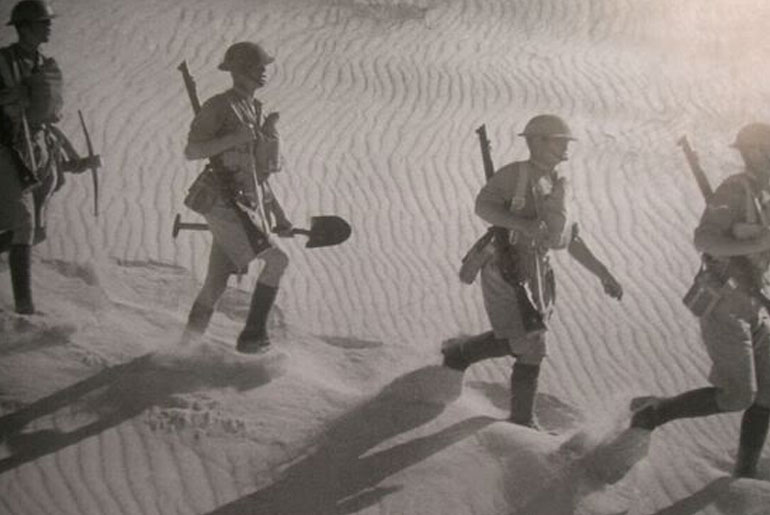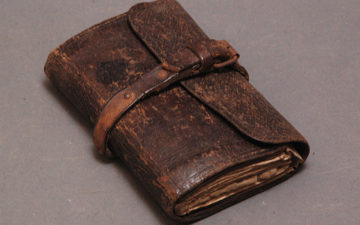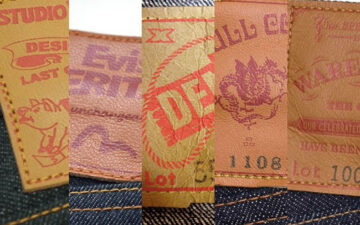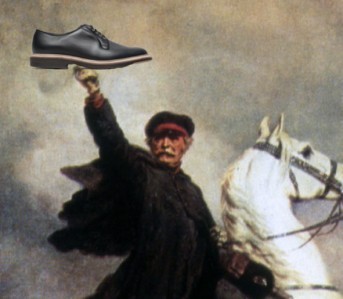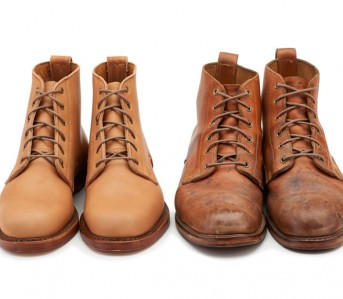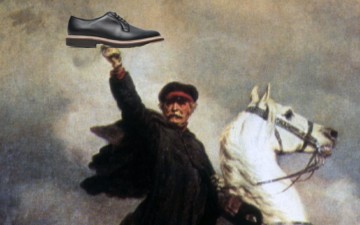Picking up where we left off yesterday, we’re looking at the history behind some of the most classic footwear styles. Read on for more footwear origin stories!
Chukka Boot
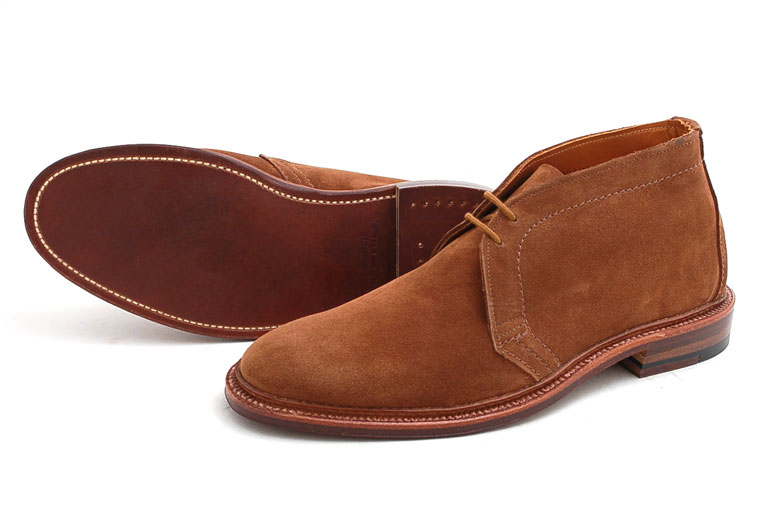
Alden Unlined Chukka Boot. Image via: Leffot.
The Chukka boot, also known as the desert boot, is yet another classic shoe design born from military conquest. The ankle-length boots feature either two or three eyelets, but never four, and often have a crepe or gum sole. British soldier, Nathan Clark, introduced the design to the masses after he had been deployed to Burma as a member of the Eighth Army in the Western Desert Campaign during WWII (see above).
He noticed officers wearing sand colored shoes they had commissioned by Cairo cobblers after their standard issued boots proved ineffective on the shifting dessert terrain. Lightweight with sufficient grip, the chukka was ideally suited to the occupied territory.
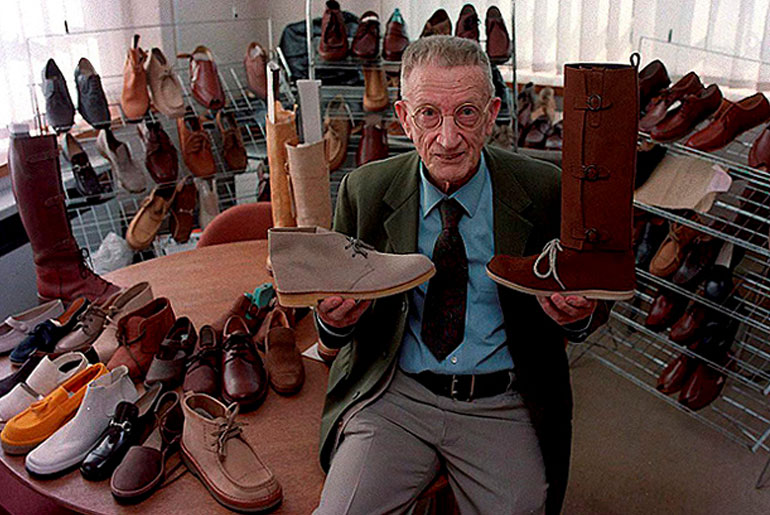
Nathan Clark, originator of the desert boot. Image via: Hypebeast.
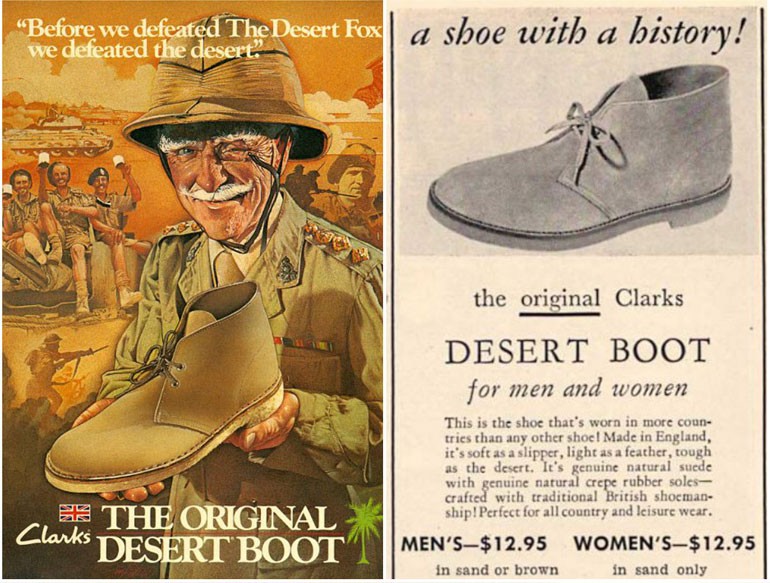
After the war, Nathan Clark brought the design back to the United Kingdom where his father ran a shoe company, C & J Clarks. With the novel design, the company was rebranded and the Clarks we all know today was born. Today, the suede is supplied by Charles F. Stead & Co. in Leeds and manufactured overseas. Beside Clarks famous desert boot, you can find Chukkas touted by Alden, Tricker’s, and countless others.
Chelsea Boot
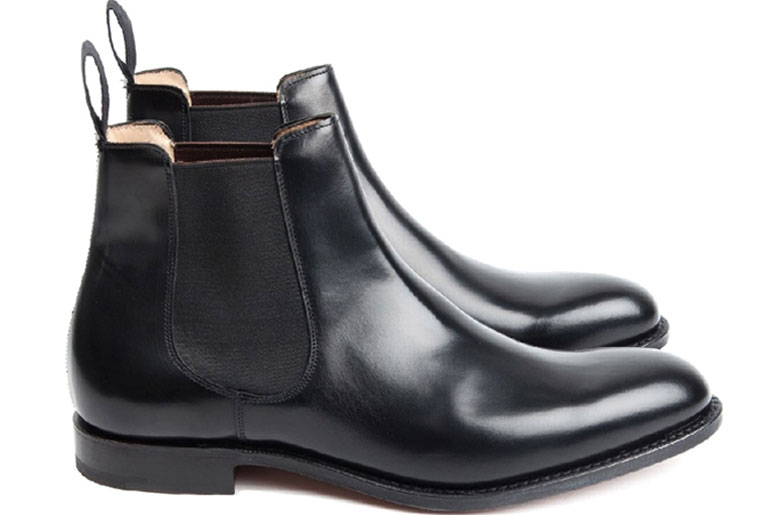
Church’s Chelsea Boot. Image via: Well-Spent
J. Sparkes-Hall—Queen Victoria’s personal shoemaker—patented the design for the Chelsea boot in 1856. The Chelsea boot was commissioned by the Queen of England with the equestrian in mind, it features an elastic side gusset that makes the shoe effortless to remove.
The design was only made possible by the invention of vulcanized rubber by Charles Goodyear in the 1840s. Originally called “Elastic Ankle Boots,” Chelsea boots acquired their more marketable name with the rise of the UK mod scene in the 1960s, when they were adopted by everyone from the Beatles to the world’s first super model, Jean Shrimpton.
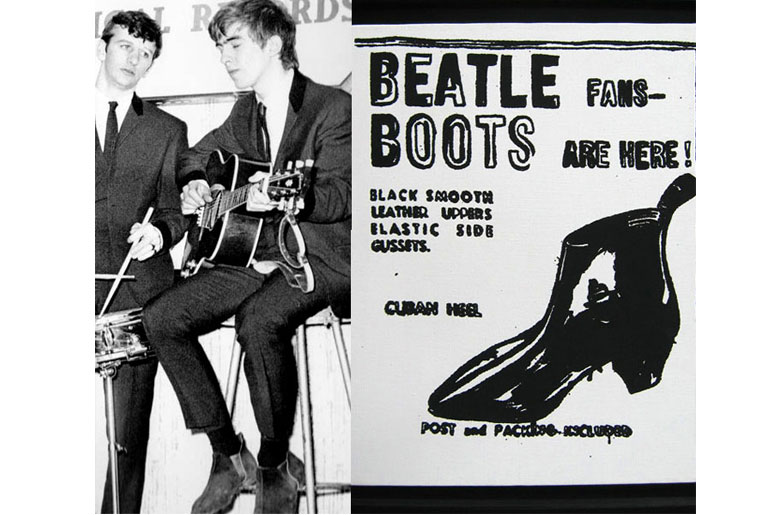
The Chelsea boot was favored for its carefree practicality and modern look, and the design found its way into mainstream culture when companies like Dr. Martens and Blundstones began adapting it for their own tailored purposes. The Australian muckboot, for instance, is a direct descendent of the original Chelsea boot design.
Although now one of the most ubiquitous shoe designs, companies like Church’s, R.M. Williams, John Lobb, Dr. Martens, and Blundstone still make some of the best.
Loafer
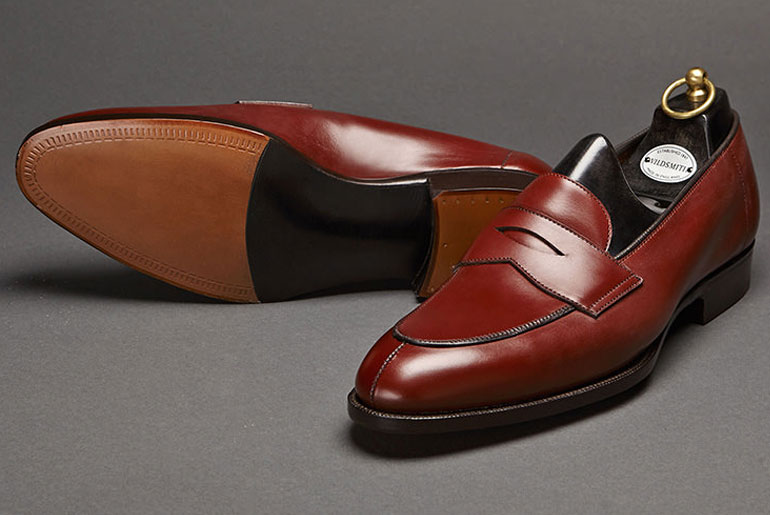
The Wildsmith Loafer, originally designed for King George VI.
The loafer has a unique history and is one of only a few shoe designs tied to developments in men’s suiting. Originally, men would wear multiple different suits throughout the day, including the dinner suit—now known as white tie—and morning suit. The rise of the lounge suit—the nineteenth century forbear to the now standard single-breasted business suit—threw traditional dress customs into disarray.
With a single suit now taking the place of multiple, footwear became the predominant signifier of evening formality. One would change out of dress shoes and into loafers for added comfort and convenience, so they remain a decidedly more casual option. The first loafer, designed in 1847, fulfilled this precise function for the landed gentry in England. It was known as the Wildsmith Loafer and made for none other than King George VI by Raymond Lewis Wildsmith of Wildsmith shoes.

King George VI of England. Image via: Daily Mail.
Of the many different types of loafer designs, three are most common today: the penny loafer, Belgian loafer, and the horse-bit (or Gucci) loafer.
Penny Loafer
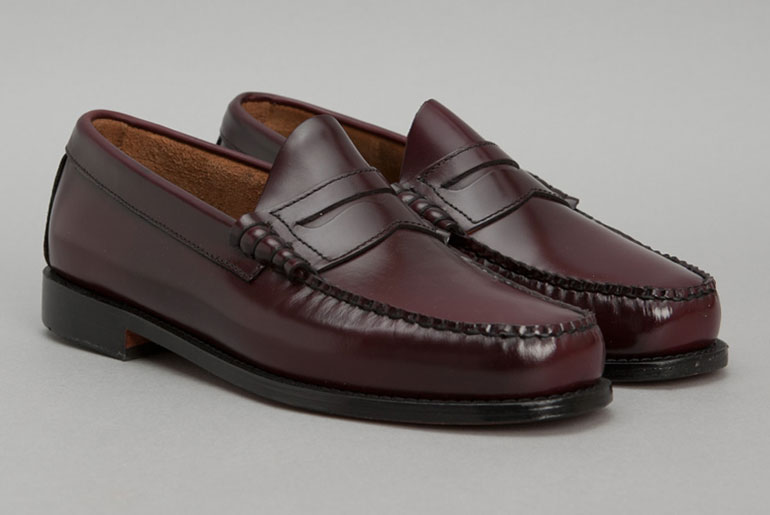
The Bass Weejun. Image via: Oi Polloi.
The style ultimately made its way to American via Norway, when the Norwegian-American shoemaker Nils Gregoriussen Tveranger created the Aurland loafer, based on a hybrid of native American moccasin designs. The style proved immensely popular in Norway and American diplomats took notice. They became known as Weejuns, a shortening of “Norwegians,” and found their mainstream audience in the States after an editorial publication in Esquire magazine.
While the penny loafer has uncertain origins, the modern design is indebted to John Bass, who adapted the omnipresent Weejun design in 1930 with a slit strap across the front. Traditionally, the loafer was defined by having no buckles, laces, or decoration of any sort. Fashion-forward students took to putting pennies in their loafers, which could be used as source of emergency funds for pay phones.
There are so many penny loafers on the market today, it’s almost impossible to not stumble across a decent pair, but among the many brands worthy of note: Alden, Russell Moccasin, Allen Edmonds, Quoddy, Rancourt, and Peluso all make great penny loafers.
Horse-bit Loafer
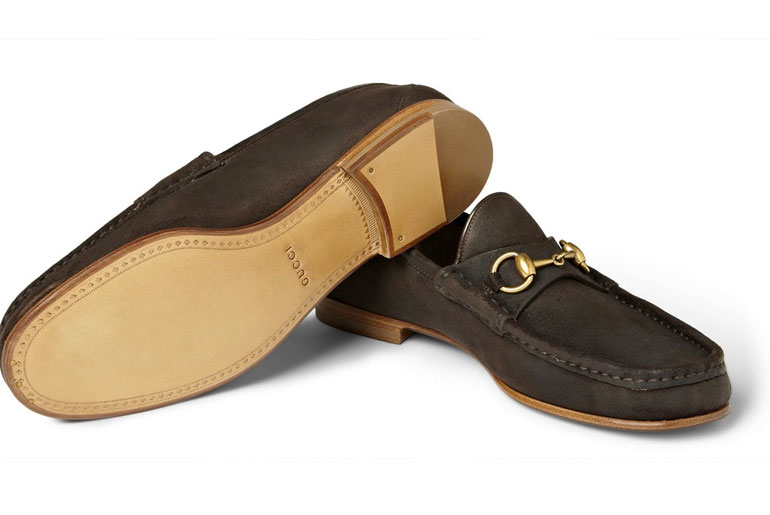
Gucci’s Horse-bit Loafer. Image via: Blank Mode Blog.
Italian designer Guccio Gucci—the founder of the eponymous equestrian leather goods company, Gucci—began looking for a means to split the difference between the comfort of a moccasin with the elegance of a dress shoe around 1953. Noting the popularity of Weejuns, Gucci set out to put his own twist on the style and incorporated the horse bit snaffle across the vamp of the shoe.
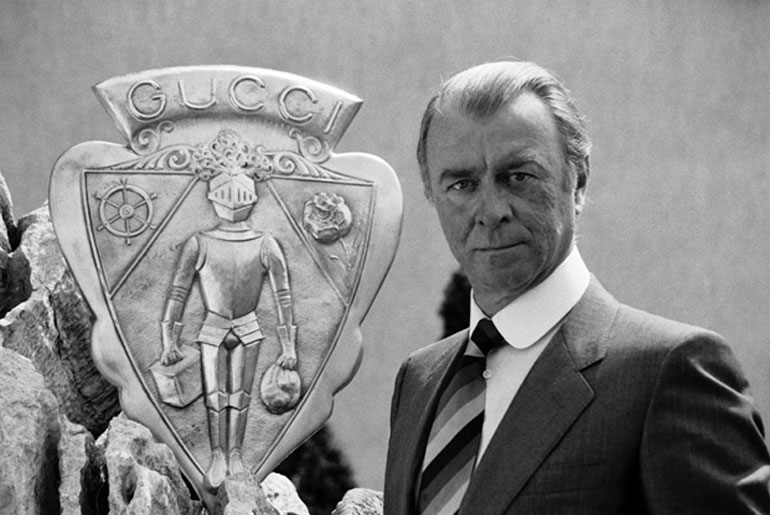
Designer Guccio Gucci.
With this seemingly trivial embellishment, Gucci managed to create the first shoe to successfully bridge the gap between casual and business wear. In testament to the achievement, the slip-on shoe remains in the permanent collection of New York’s Metropolitan Museum of Art not to mention innumerable wardrobes around the world. Gucci remains the classic, although many designers—including Alden, Louis Vuitton, and Tod’s—continue to experiment with the style.
Belgian Loafer
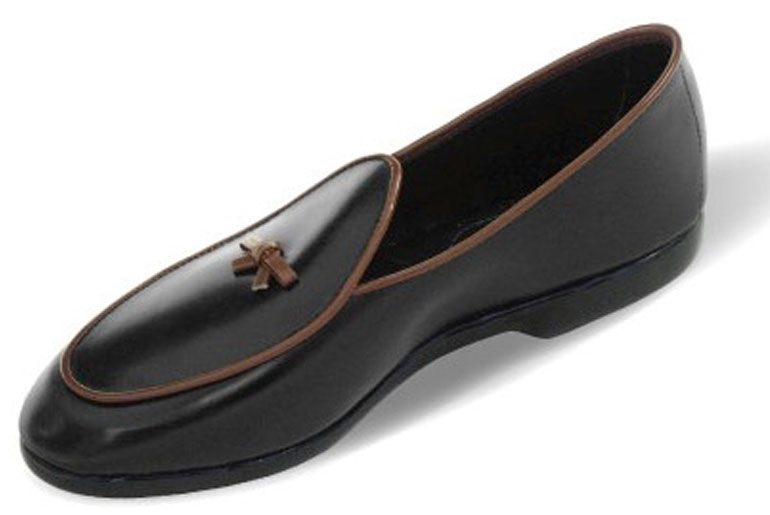
Belgian Loafer by Belgian Shoes.
The Belgian loafer is the last in this long line of loafer designs and made its debuted in the 1940s. Henri Bendel—the designer who introduced Coco Chanel to the states—opted to create a more delicate, softer version of the loafer by having Belgian cobblers to use the hundred year-old “turned” method, by which shoes are sewn inside out before being flipped outwards.
As if to further accentuate the shoe’s elegant construction, Bendel added the leather bow to the toe, adding a much-needed masculine touch. Bendel’s design is still in production by the Belgian Shoes company, which is a subsidiary of Bendel’s eponymous brand.
